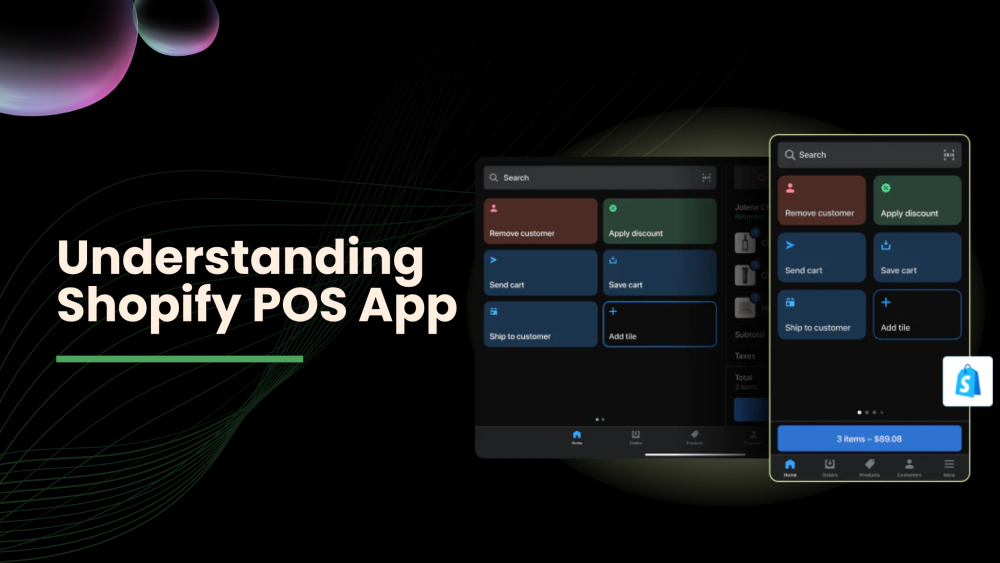Welcome to CodeCrew Infotech



Step-by-Step Tutorial: How to Secure Your Laravel 11 API with JWT Authentication
JWT (JSON Web Token) authentication in Laravel can be described in three lines as follows:
- Generate JWT tokens upon successful user authentication.
- Verify and decode JWT tokens to authenticate subsequent requests.
- Implement middleware to secure routes by validating JWT tokens, ensuring authenticated access.
Using JWT (JSON Web Token) authentication in Laravel offers several advantages:
- Stateless: JWTs are stateless tokens, meaning the server does not need to store session information. This reduces server overhead and can improve scalability.
- Security: JWTs can be digitally signed, providing a layer of security to ensure that the token has not been tampered with. This helps prevent unauthorized access to protected resources.
- Flexibility: JWTs can contain custom claims, allowing you to include additional user information or metadata in the token payload. This can be useful for building more complex authentication and authorization systems.
- Cross-Origin Resource Sharing (CORS) Support: Since JWTs are typically sent in the authorization header of HTTP requests, they work well with CORS, allowing authentication across different domains.
- Mobile and Single Page Application (SPA) Support: JWTs are often used in mobile apps and SPAs because they can be easily transmitted via HTTP headers or as URL parameters.
- Overall, JWT authentication in Laravel provides a lightweight and flexible solution for securing your application's APIs and resources.
1. Create a project:
Now, open a terminal and run this command:
composer create-project laravel/laravel jwt-auth-app
After Setup Project:
cd jwt-auth-app
2. Database Configuration:
In the second step, configuring database credentials for the Laravel Jwt Auth app is essential. Simply update the .env file located in the root directory of the application.
DB_CONNECTION=mysql DB_HOST=127.0.0.1 DB_PORT=3306 DB_DATABASE=your_db_name DB_USERNAME=your_db_username DB_PASSWORD=your_db_password
Migrate the database using the following command:
php artisan migrate
3. Install the Laravel tymon/jwt-auth package: -
Now, open terminal
composer require tymon/jwt-auth
To publish the configuration file for a package in Laravel, you can use the vendor:publish Artisan command with the
php artisan vendor:publish --provider="Tymon\JWTAuth\Providers\JWTAuthServiceProvider"
4. Generate a secret key:
To generate a secret key for JWT authentication in Laravel, you can use the php artisan jwt:secret Artisan command. This command generates a unique secret key specifically for JWT authentication in your Laravel application.
Here's the command:
php artisan jwt:secret
5. Deprecated in Laravel 11: install:api
The php artisan install:api command in Laravel 11 has been deprecated. Here's what you need to know:
What php artisan install:api did (Laravel versions < 11):
- This command is used to perform several actions related to API development:
- API routes file creation: It created a file named api.php in the routes directory, specifically for defining API routes.
- Package installation: In some versions, it might have installed packages like tymon/jwt-auth to facilitate API authentication.
- Database migrations: It could have triggered the migration process to create database tables required for authentication or other API functionality.
php artisan install:api
6. Update the user model.
In Laravel, updating your user model for JWT authentication typically requires a few modifications. Here's a basic outline of what you might need to do:
1. Implement the JWTSubject interface: Your user model should implement the Tymon\JWTAuth\Contracts\JWTSubject interface. This requires you to define two methods: getJWTIdentifier() and getJWTCustomClaims(). These methods help the Laravel JWT Auth package determine the identity and additional claims associated with the user.
To begin, open your 'app/Models/User.php' file and make the necessary modifications to the existing code.
<?php
namespace App\Models;
use Tymon\JWTAuth\Contracts\JWTSubject;
use Illuminate\Database\Eloquent\Factories\HasFactory;
use Illuminate\Notifications\Notifiable;
use Illuminate\Foundation\Auth\User as Authenticatable;
class User extends Authenticatable implements JWTSubject
{
use HasFactory, Notifiable;
/**
* The attributes that are mass-assignable.
*
* @var array<int, string>
*/
protected $fillable = [
'name',
'email',
'password',
];
/**
* The attributes that should be hidden for serialization.
*
* @var array<int, string>
*/
protected $hidden = [
'password',
'remember_token',
];
/**
* Get the attributes that should be cast.
*
* @return array<string, string>
*/
protected function casts(): array
{
return [
'email_verified_at' => 'datetime',
'password' => 'hashed',
];
}
/**
* Get the identifier that will be stored in the subject claim of the JWT.
*
* @return mixed
*/
public function getJWTIdentifier()
{
return $this->getKey();
}
/**
* Return a key value array, containing any custom claims to be added to the JWT.
*
* @return array
*/
public function getJWTCustomClaims()
{
return [];
}
}
7. Update Auth.php:
To update the auth.php configuration file in Laravel for JWT authentication, you typically need to make changes to the 'guards' and 'providers' sections. Here's how you can modify it:
- Guards Configuration: Add a new guard for JWT authentication. This guard will use the jwt driver provided by the jwt-auth package.
'guards' => [
'web' => [
'driver' => 'session',
'provider' => 'users',
],
'api' => [
'driver' => 'jwt',
'provider' => 'users',
],
],
- Providers Configuration: Ensure that the 'users' provider is set up to retrieve user information from the appropriate model (typically the App\Models\User model).
'providers' => [
'users' => [
'driver' => 'eloquent',
'model' => App\Models\User::class,
],
],
8. Make a controller.
To create an AuthController in Laravel, you can use the php artisan command-line tool. Here's how you can generate the controller:
php artisan make:controller AuthController
This command will create a new file named AuthController.php in the app/Http/Controllers directory with a basic controller structure. You can then customize this controller to handle authentication requests using JWT as per your requirements.
To begin, open your 'app/Models/AuthController.php' file and make the necessary modifications to the existing code.
<?php
namespace App\Http\Controllers;
use App\Models\User;
use Illuminate\Http\Request;
use Illuminate\Support\Facades\Hash;
use Illuminate\Support\Facades\Validator;
use Tymon\JWTAuth\Facades\JWTAuth;
use Tymon\JWTAuth\Exceptions\JWTException;
use Illuminate\Support\Facades\Auth;
class AuthController extends Controller
{
/**
* Register a new user.
*
* @param \Illuminate\Http\Request $request
* @return \Illuminate\Http\JsonResponse
*/
public function register(Request $request)
{
$validator = Validator::make($request->all(), [
'name' => 'required|string|max:255',
'email' => 'required|string|email|unique:users', // Ensure unique email
'password' => 'required|string|min:8',
]);
if ($validator->fails()) {
return response()->json($validator->errors(), 422);
}
$user = User::create([
'name' => $request->name,
'email' => $request->email,
'password' => Hash::make($request->password),
]);
return response()->json(['message' => 'User created successfully'], 201);
}
/**
* Authenticate the user and return a JWT token if valid credentials are provided.
*
* @param \Illuminate\Http\Request $request
* @return \Illuminate\Http\JsonResponse
*/
public function login(Request $request)
{
$validator = Validator::make($request->all(), [
'email' => 'required|email',
'password' => 'required|string|min:6',
]);
if ($validator->fails()) {
return response()->json($validator->errors(), 422);
}
$credentials = request(['email', 'password']);
if (!$token = auth()->attempt($credentials)) {
return response()->json(['error' => 'Unauthorized'], 401);
}
return $this->respondWithToken($token);
}
/**
* Respond with a JWT token.
*
* @param string $token
* @return \Illuminate\Http\JsonResponse
*/
protected function respondWithToken($token)
{
return response()->json([
'access_token' => $token,
'token_type' => 'bearer',
'expires_in' => auth('api')->factory()->getTTL() * 60
]);
}
/**
* Get the authenticated user's profile.
*
* @param \Illuminate\Http\Request $request
* @return \Illuminate\Http\JsonResponse
*/
public function profile(Request $request)
{
// Retrieve the authenticated user
$user = Auth::user();
// Return the user's profile information
return response()->json($user);
}
}
9. Create middleware:
Now let us use the following command to create middleware:.
php artisan make:middleware CheckAuth
To begin, open your 'CheckAuth.php' file and make the necessary modifications to the existing code.
app/Http/Middleware/CheckAuth.php
<?php
namespace App\Http\Middleware;
use Closure;
use Illuminate\Http\Request;
use Symfony\Component\HttpFoundation\Response;
class CheckAuth
{
/**
* Handle an incoming request.
*
* @param \Closure(\Illuminate\Http\Request): (\Symfony\Component\HttpFoundation\Response) $next
*/
public function handle(Request $request, Closure $next): Response
{
if (!auth()->user() && !$request->bearerToken()) {
return response()->json(['error' => 'Unauthenticated'], 401);
}
return $next($request);
}
}
10. Register Middleware:
Open the 'app.php' file.
bootstrap/app.php
<?php
use Illuminate\Foundation\Application;
use Illuminate\Foundation\Configuration\Exceptions;
use Illuminate\Foundation\Configuration\Middleware;
return Application::configure(basePath: dirname(__DIR__))
->withRouting(
web: __DIR__, '/../routes/web.php',
api: __DIR__, '/../routes/api.php',
commands: __DIR__ . '/../routes/console.php',
health: '/up',
)
->withMiddleware(function (Middleware $middleware) {
$middleware->alias([
'checkAuth' => \App\Http\Middleware\CheckAuth::class,
]);
})
->withExceptions(function (Exceptions $exceptions) {
//
})->create();
11. Add Routes:
To add the route for the profile endpoint in your routes/api.php file, you can do the following:
To begin, open your 'routes/api.php' file and make the necessary modifications to the existing code.
<?php
use App\Http\Controllers\AuthController;
use Illuminate\Http\Request;
use Illuminate\Support\Facades\Route;
Route::post('/register', [AuthController::class, 'register']);
Route::post('/login', [AuthController::class, 'login']);
Route::middleware('checkAuth')->group(function () {
Route::get('/profile', [AuthController::class, 'profile']);
// Add more routes that require authentication here...
});
12. Run the Laravel Project:
run the following command:
php artisan serve
Register API URL:
localhost:8000/api/register
Login API URL:
localhost:8000/api/login
Profile API URL:
localhost:8000/api/profile
Conclusion:-
In conclusion, implementing JWT authentication in Laravel involves generating and validating tokens for secure user authentication. By applying the auth:api middleware to specific routes, only authenticated users with valid JWT tokens can access protected endpoints, ensuring the security of your application's APIs. This approach provides a stateless and flexible authentication mechanism, enhancing the overall security and scalability of your Laravel application.
Thank you...
You may also like













